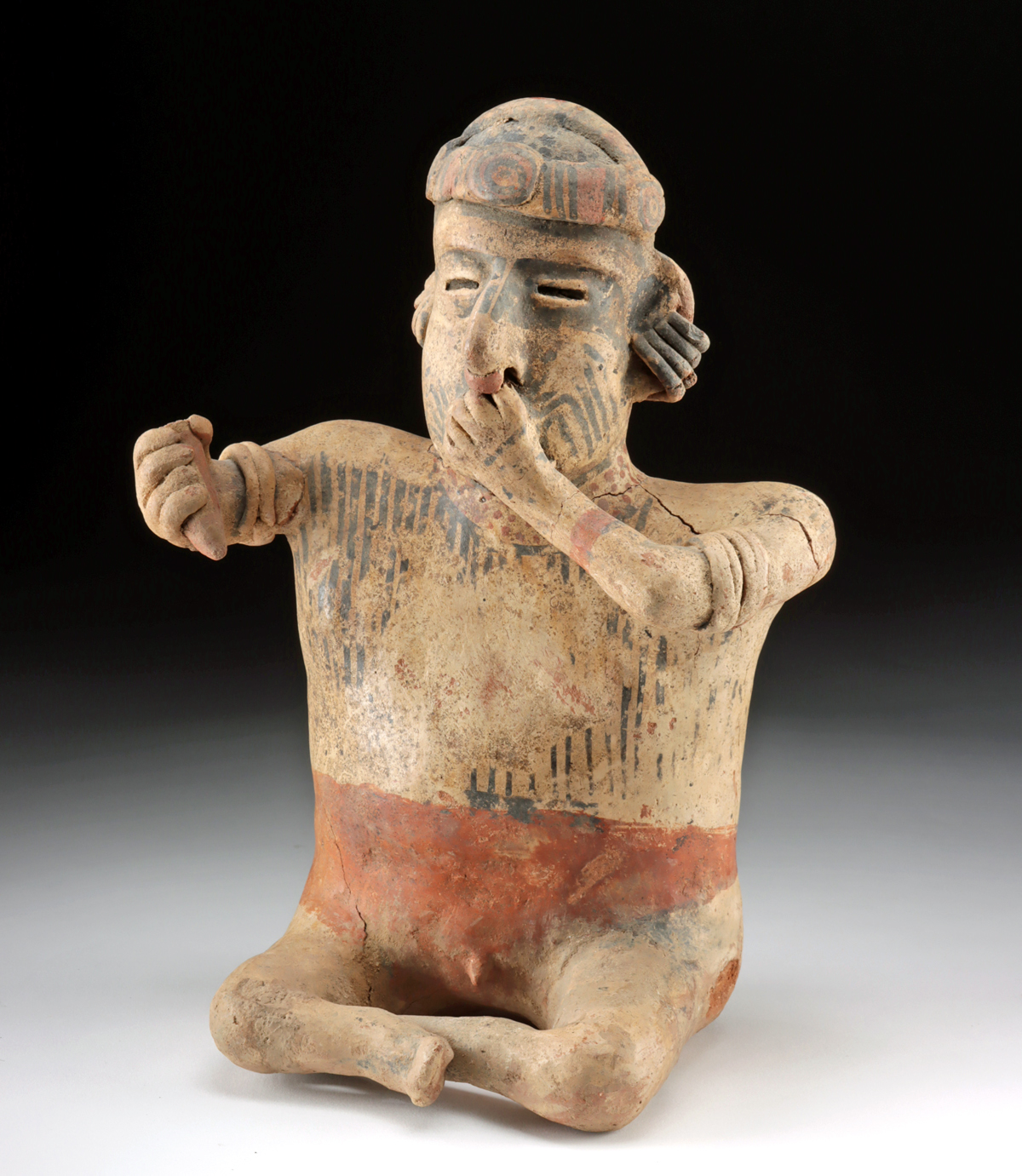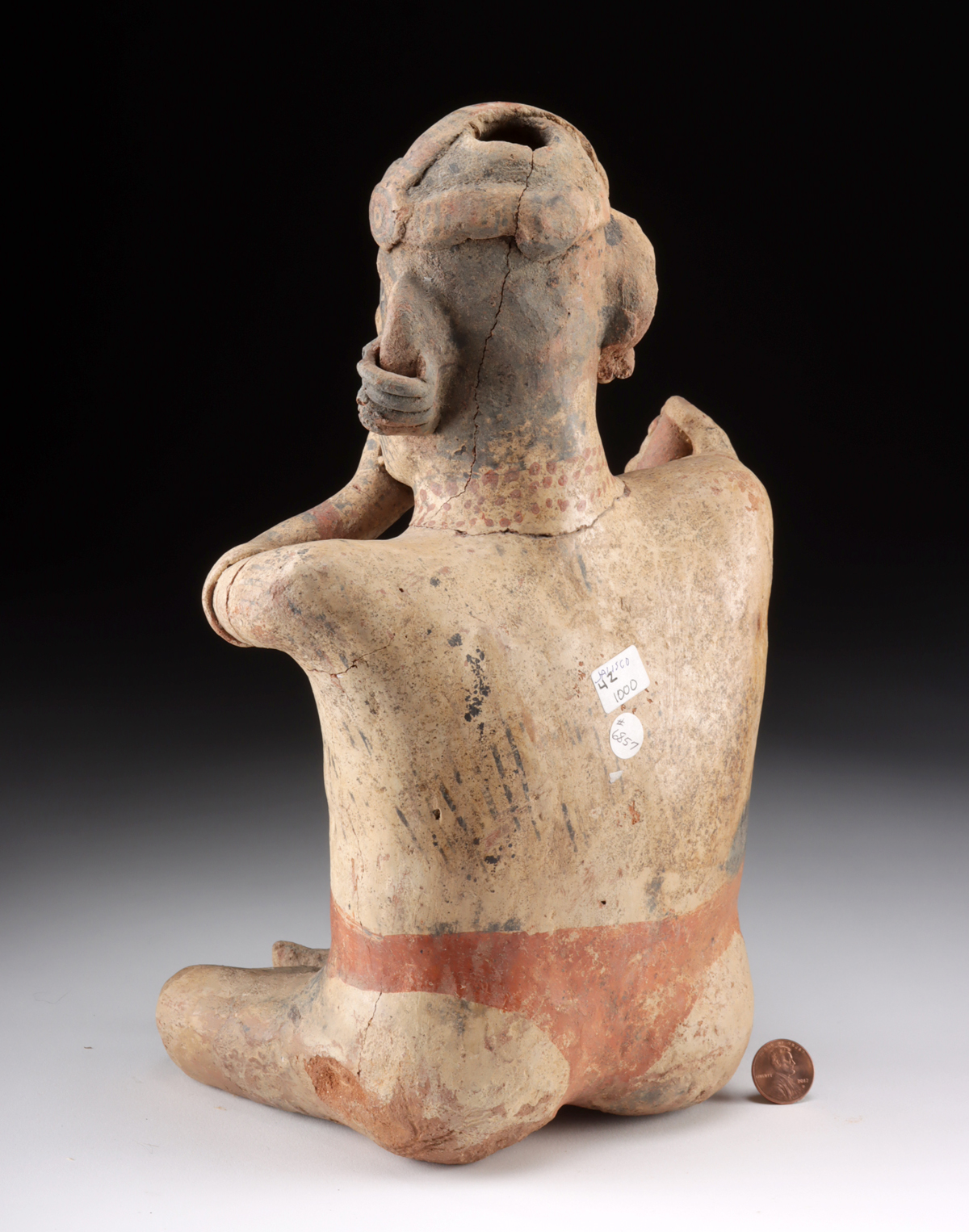Lot 137, Auction 3/28/2024: Nayarit Polychrome Seated Male Warrior Figure
Sold
Pre-Columbian, West Mexico, Nayarit, ca. 100 BCE to 250 CE. An impressive pottery figure of a semi-nude male warrior shown seated and wielding a war club. Elaborately hand-painted in black, red, and beige slip, the figure holds one hand to his mouth and gazes forth from slender eyes, his visage comprised of a straight brow line and a huge, curved nose. His head is adorned by a strap-form helmet, heavy ear ornaments, and a nasal ring, as bangles embellish his biceps. Black stripes across his chest indicate he may be wearing armor on his upper body, though his protruding phallus suggests he is nude from the waist down. An example like this would have guarded a tomb from potential thieves and intruders. Size: 5.4″ L x 7.6″ W x 11.5″ H (13.7 cm x 19.3 cm x 29.2 cm)
West Mexican shaft tomb figures like this example derive their names from the central architectural feature that we know of from this culture. Nayarit, located on Mexico’s southwest coast, was part of the shaft tomb culture during this time, along with neighbors in nearby Colima and Jalisco. These indigenous peoples would build generally rectangular vertical or near-vertical shafts down from the ground level – usually about 3 to 20 meters deep – through tepetate, the volcanic tuff that makes up the geology of the region, to narrow horizontal tunnels that led to one or more vaulted or rounded burial chambers.
These shafts were almost always dug beneath a dwelling, probably a family home, and were used as family mausoleums, housing the remains of many related individuals. Figures like this one were placed into the tombs; researchers believe that they were placed around the edges facing inward, as if in conversation with the dead. Grouped with other figures, and alongside clay bowls, and boxes, figures like this one were positioned around the body (or bodies), near the skull.
Condition: Missing top of weapon in right hand. Professionally repaired with some chipping along visible break lines and restoration along others. Chips to earrings and left hip, as well as age-commensurate surface wear as shown, but otherwise, good presentation with nice preservation of pigments and earthen deposits in areas.
Provenance: private Reinsmoen collection, Clear Lake, Iowa, acquired through descent from Robert Anderson, acquired prior to 2000
All items legal to buy/sell under U.S. Statute covering cultural patrimony Code 2600, CHAPTER 14, and are guaranteed to be as described or your money back.
A Certificate of Authenticity will accompany all purchases.
We ship worldwide and handle all shipping in-house for your convenience.























